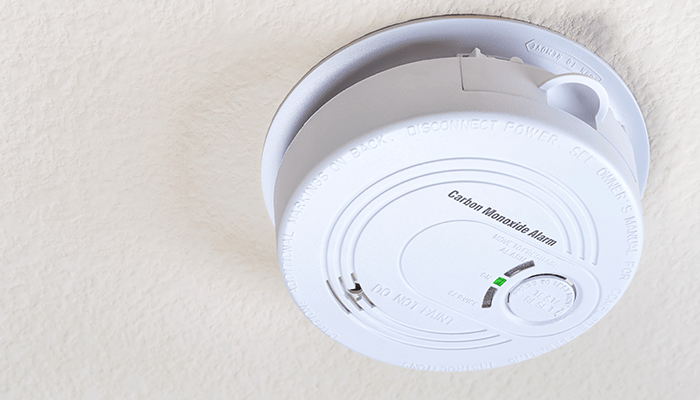Carbon Monoxide Testing In Your Home

What Is Carbon Monoxide?
The gas known as carbon monoxide (CO) is odorless, colorless and tasteless, as well as hazardous to humans when released in poorly ventilated or enclosed spaces. The gas is formed naturally from the burning of carbon-containing materials (such as coal, wood, kerosene, etc.).
When there is an excess of carbon monoxide in the air, your body displaces the oxygen in your blood with CO. This causes the gas to build up in your bloodstream and results in carbon monoxide poisoning.
If caught early, carbon monoxide poisoning can be reversed, but long-term effects can still occur. Bodily systems that require large amounts of oxygen—like the nervous and cardiovascular systems—can be permanently damaged. Carbon monoxide poisoning can also have significant effects on reproduction.
Symptoms of carbon monoxide poisoning are varied, and often flu-like, including headaches, nausea, dizziness, drowsiness, chest pain, muscle weakness and others. While anybody can be affected by carbon monoxide poisoning, those that are most susceptible include infants, and the elderly and those with chronic heart or breathing conditions. Those that are sleeping or inebriated are also at risk.
How to Prevent Carbon Monoxide Poisoning in Your Home
While carbon monoxide poisoning can be a real threat, there are precautions you can take to prevent carbon monoxide poisoning in your home. Below are just a few steps you can take to ensure that your family is protected from carbon monoxide poisoning.
- Make sure gas appliances are properly ventilated.
- Keep a carbon monoxide detector inside your home—be sure to replace it every five years.
- Have your heating system serviced by a certified technician once a year
- Do not use a power generator inside your house or garage.
- Make sure your chimney is checked/cleaned every year.
Carbon Monoxide Testing In Your Home
Preventative measures, like installing a CO detector and monitoring ventilation, are good first steps. But if you are still concerned you can perform at-home carbon monoxide testing. Passive CO test kits—also called detector badges—can be purchased at hardware stores for around $10.
To perform carbon monoxide testing, start by documenting the date of your test on the test badge from the kit. Secure the test badge close to the area in which you’re concerned about carbon monoxide leaks. This could be your furnace room, garage or your fireplace. Make sure that the test badge is out of direct sunlight and away from ammonia or any other solvents and cleaners. Return to the test badge after 15 minutes and look for any darkening in color. Even if the discoloration is slight, you’ll want to have a certified inspector look further into the issue and locate the source of the leak.
Inspect-It 1st offers a full range of inspection services, including residential carbon monoxide testing. For the last 15 years, our certified professionals have been providing high-quality, thorough inspections and reports for buyers, sellers, and commercial properties. If you suspect a possible carbon monoxide leak in your home call Inspect-It 1st today!
